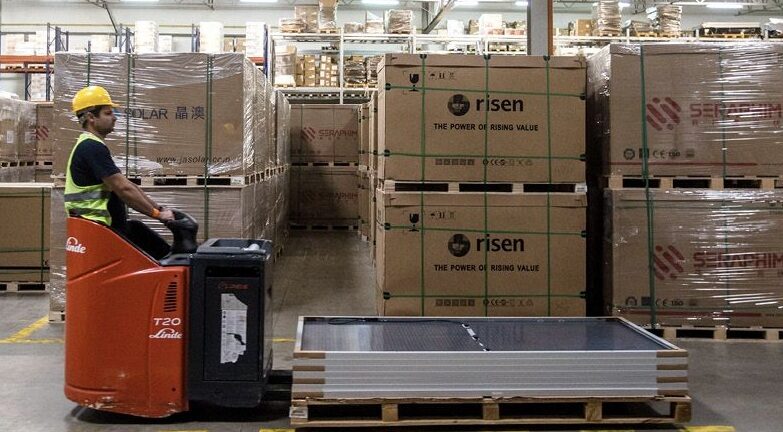A research group led by scientists from Purdue University has created a novel model for assessing the growth of corn in agrivoltaic facilities and has proposed to use a spatiotemporal shadow distribution (SSD) model to optimize crop yield and power production.
The new method is based on the agricultural production systems simulator (APSIM) plant model, which is based on finer temporal resolution, with literature reportedly supporting its validity. The SSD model, which accounts for the shadow cast by the PV panels, was used in conjunction with the National Renewable Energy Laboratory (NREL) radiation data. These combined data were then calibrated and validated with the results from their field measurements.
The field experiment was conducted at an agrivoltaic farm at Purdue University in West Lafayette, Indiana, USA. There, PV panels were deployed in two arrangements, either 300 W modules placed adjacent to each other or 100 W modules arranged in an alternate checkerboard pattern. They all used single-axis trackers and are 6.1 meters high. The set-up was tested between April and October of 2020.
“For validation, 12 plots are considered,” the academics said. “Corn ears of three representative plants from each of these plots were hand-collected. Overall, 570 corn plants from the without-PV region and 36 corn plants from the with-PV region, respectively, were used in the analysis. The ears were cleaned, imaged, and processed using a DuPont pioneer ear photometer.”
The field measurement showed that the corn yield from the area without PV was measured to be 10,955 kg/ha, compared with the yield of 10,182 kg/ha of the PV area. That was in reported agreement with the novel model, which predicted 10,856 kg/ha for the no-PV area and 10,102 kg/ha for the agri-PV field.
The researchers then used the model to test the impact of the tracker height, distance between arrays, panel angle, and the activation of the tracking system on yield. They first found that designs that lower the tracker height without impeding the movement of plant machinery should be envisioned as the overall average corn yield is a weak function of the tracker height up to 2.44 m.
“However, the variability from one corn row to another increases as the tracker height is reduced,” they further explained. “Another interesting finding is that for our PV module sizes, increasing the distance between the adjacent PV rows beyond 9.1 m, while keeping the total power over the entire land constant, does not lead to an increase in corn yield based on the total land area.”
They also found that anti-tracking (AT) around solar noon provided the most significant increase in the corn yield. “However, this increase in corn yield of 5.6% is quite modest and should be weighed against a substantial decline in solar power,” the group emphasized.
The proposed model was presented in “Optimizing corn agrivoltaic farming through farm-scale experimentation and modeling,” published in Cell Reports Sustainability. The research group also included academics from Denmark's Aarhus University.
This content is protected by copyright and may not be reused. If you want to cooperate with us and would like to reuse some of our content, please contact: editors@pv-magazine.com.



By submitting this form you agree to pv magazine using your data for the purposes of publishing your comment.
Your personal data will only be disclosed or otherwise transmitted to third parties for the purposes of spam filtering or if this is necessary for technical maintenance of the website. Any other transfer to third parties will not take place unless this is justified on the basis of applicable data protection regulations or if pv magazine is legally obliged to do so.
You may revoke this consent at any time with effect for the future, in which case your personal data will be deleted immediately. Otherwise, your data will be deleted if pv magazine has processed your request or the purpose of data storage is fulfilled.
Further information on data privacy can be found in our Data Protection Policy.